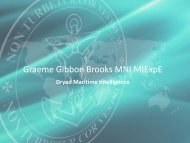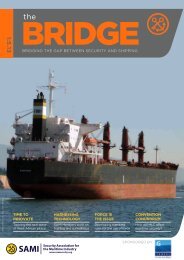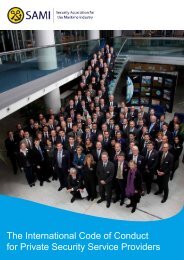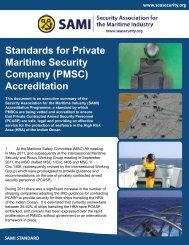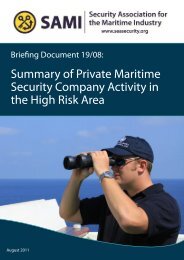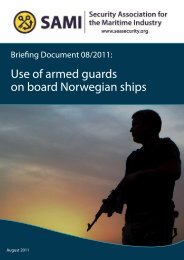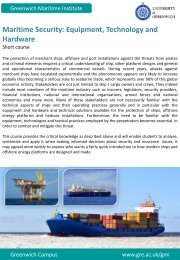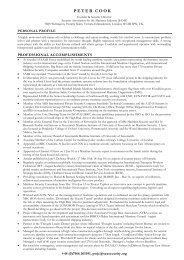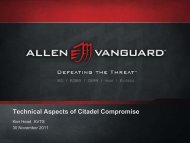SAMI Briefing Maritime Labour Convention FAQs and Text March 2013
SAMI Briefing Maritime Labour Convention FAQs and Text March 2013
SAMI Briefing Maritime Labour Convention FAQs and Text March 2013
You also want an ePaper? Increase the reach of your titles
YUMPU automatically turns print PDFs into web optimized ePapers that Google loves.
<strong>Convention</strong>, <strong>and</strong> the representatives of Shipowners <strong>and</strong> Seafarers appointed by theGoverning Body after consultation with the ILO’s Joint <strong>Maritime</strong> Commission (JMC). 14The Committee has an important role with respect to amendments to the Code [see A9.What is the Code of the MLC, 2006?]. If faults are identified in the working of the<strong>Convention</strong>, or if the <strong>Convention</strong> needs to be updated, the Special Tripartite Committeewill, in accordance with Article XV of the <strong>Convention</strong>, have the power to adoptamendments [see A21. How can the MLC, 2006 be updated?]. The Committee will alsoplay an important consultative role under Article VII for countries that do not haveshipowners’ or seafarers’ organizations to consult when implementing the MLC, 2006.A23. What is the status of the Preamble <strong>and</strong> the Explanatory Note in the MLC,2006?The Preamble to the MLC, 2006, like preambles in other international instrumentsprovides information regarding the aspiration <strong>and</strong> intentions of the drafters of the<strong>Convention</strong>, however the preamble does not contain any binding legal obligations. TheExplanatory Note to the Regulations <strong>and</strong> Code of the <strong>Maritime</strong> <strong>Labour</strong> <strong>Convention</strong>, whichis placed after the Articles, is also not binding but is there, as its title suggests, to providean explanation that will help countries to better underst<strong>and</strong> the relationship between thediffering parts of the <strong>Convention</strong> <strong>and</strong> the nature of the obligations under each part of theMLC, 2006.A24. What is meant by the term “Member”?The <strong>Maritime</strong> <strong>Labour</strong> <strong>Convention</strong>, 2006 (MLC, 2006) like other ILO legalinstruments uses the terms “member” or “each member” throughout the MLC, 2006. Theterms are used by the International <strong>Labour</strong> Organization (ILO) to refer to countries that aremembers of the ILO. In the context of this <strong>Convention</strong> a reference to “Member” or “EachMember” should be understood as referring to countries that have ratified the <strong>Convention</strong>,unless the <strong>Convention</strong> clearly refers to “any Member of the Organization” (as inparagraph 2 of Article XV, for example).A25. Who is the competent authority?The MLC, 2006 defines the term “competent authority” in Article II, paragraph 1(a)as “the minister, government department or other authority having power to issue <strong>and</strong>enforce regulations, orders or other instructions having the force of law in respect of thesubject matter of the provision concerned”. It is a term used to indicate the department(s)of a government with responsibility for implementing the MLC, 2006. Practices could varybetween countries <strong>and</strong> often more than one department or agency (e.g., labour or maritimeor social security) could be involved in implementing aspects of the MLC, 2006 in acountry <strong>and</strong> could therefore be the “competent authority” for the particular issue.14 To be found at: www.ilo.org/global/industries-<strong>and</strong>-sectors/shipping-ports-fisheries-inl<strong>and</strong>waterways.12 FAQ




